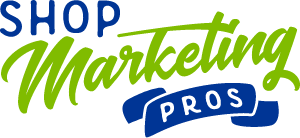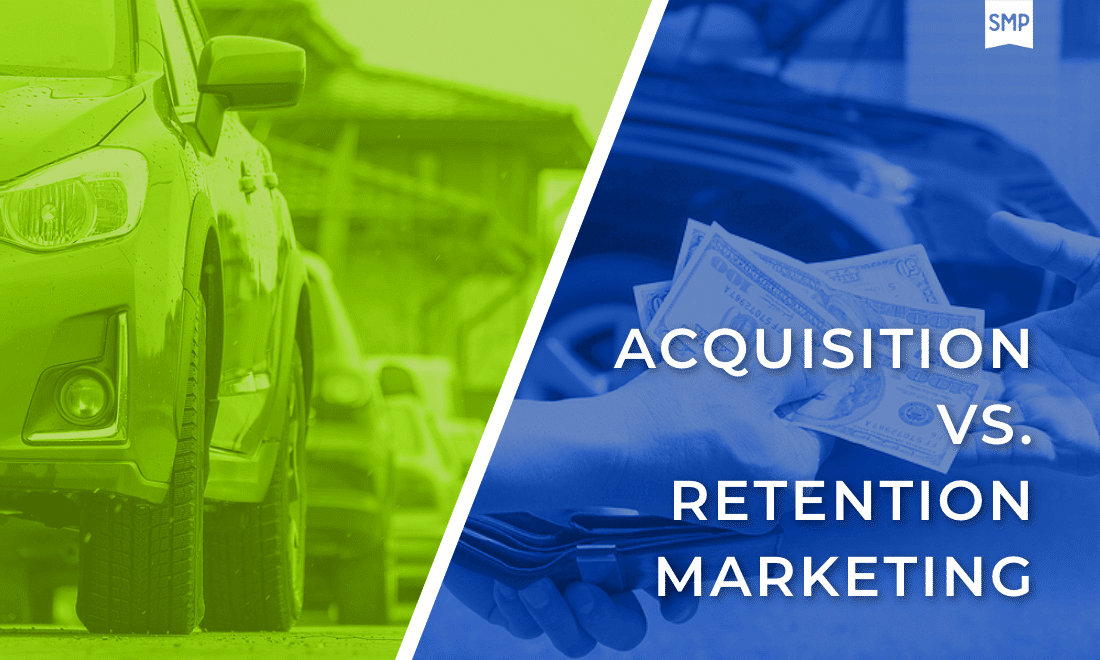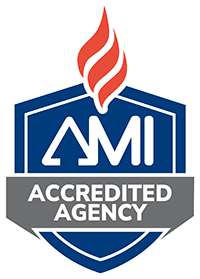As Kim and I travel all over the country teaching classes on marketing, it’s apparent when we start talking to shop owners that they can tell you what different marketing activities they are doing, but not necessarily why they are doing them.
Most small business owners do random marketing that is disconnected from everything else they are doing. A lot of times their marketing is dictated by what salesperson stopped in on them or called at the right moment. They’re doing the value pack mailer because one of their clients is a rep for the company. They have an ad in the Yellowpages simply because they’ve always had one there. They have an ad in a local magazine because they won “best mechanic” in the “Best of [insert city]” awards that the magazine does (because they know they sell more ads that way). I could keep going and going, but you get the point.
People like to say things like “The most effective marketing for an auto repair shop is Google Ads” (or Facebook, or direct mail, or whatever). But the truth is, the most effective marketing isn’t a medium – it’s a well-planned, well-executed comprehensive strategy.
The 30,000-foot view of a marketing plan should include these two questions.
- What are we going to do to bring in new customers?
- What are we going to do to keep our existing customers, bring them in more often, and get them to spend more money with us?
The tactics and techniques used as an answer to the first question will fall under the category of “Acquisition Marketing”.
The tactics and techniques used as an answer to the second question will fall under the category of “Retention Marketing”.
What is the Difference Between Acquisition Marketing and Retention Marketing?
Whereas both of these categories of marketing belong to the same marketing plan, they are very different in nature. Although there could be some crossover between tactics and outcomes, acquisition marketing and retention marketing will be in completely different sections in your marketing plan.
Acquisition marketing is any marketing that has the purpose of getting brand-new customers into your shop for the first time. These are people who have probably never heard of your shop, or they may know who you are but have never really considered you or had a reason to bring their vehicle in for service or repair.
Retention marketing is any marketing that has the purpose of getting people who are already customers of yours to remain customers, come in more often, or spend more money with you at each visit. These customers already know who you are, and where you’re located, and they mostly know what you do but may not be aware of some of the services you offer.
So the message for each of these types of marketing will be different, the medium will very likely be different, and the desired outcome will be different.

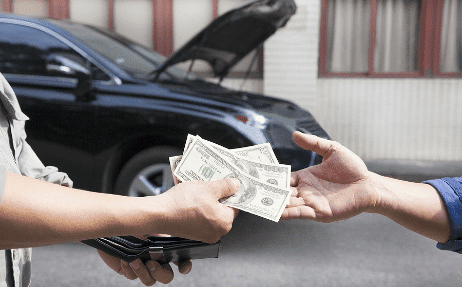
Are you trying to bring in new customers or are you trying to reach your existing customer base?
Examples Of Acquisition Marketing
Acquisition marketing usually has a pretty high focus on awareness. You want to make people aware of who you are, what you do, how you’re different than every other auto repair shop in town, and then give them an offer of some type to get them in the door.
Because these will be first-time visitors to your shop, you usually want to make some kind of “foot in the door” offer. In other words, start small. For auto repair shops this is often something like an oil change special, check engine light special, etc.
Many shops don’t believe in discounting at all. In this case, you may give away something for “free” that you were going to do anyway, like a free car wash with any service or a complimentary 59-point inspection. Maybe you don’t do anything except sell your shop on expertise and high-quality repairs. It’s completely up to you.
Acquisition marketing is going to rely a lot on paid services because you don’t have the relationship with the consumer yet to be able to market to them for free, though there are some examples of acquisition marketing that won’t require you to pay after your initial investment.
Pay-to-Play Acquisition Marketing
Google Ads
Google Ads are one of the most commonly used types of acquisition marketing. These ads are triggered when someone within a defined geographic area uses specific words in a search query. For example, a person within a 5-mile radius of your shop does a Google search for “auto repair shops near me”. Your ad is displayed, and the searcher clicks on the ad, lands on your website, and makes an appointment. Note: there is way more to it than this, but in its simplest form, this is what happens. You have a new customer.
Facebook and Instagram Ads
When advertising on social media there are many ways you can run ads. You can run ads for awareness (think digital billboard), clicks to your website, video views, form fills, phone calls, and so much more. We have found the most effective social media ads are simple awareness ads. Remember, unlike Google ads where someone was searching for the service you offer, with social media ads you are planting an idea in someone’s head at a time when they probably don’t need your services. Awareness ads are also the least expensive type of ads to run, so you can have them seen A LOT of times by the same people. So you run ongoing awareness campaigns for people who live and work within a specified radius of your shop. These people see your ads all the time. They are driving to work one day and their check engine light comes on. They think to themself, “I’m going to take my car to [insert your shop’s name]”. They don’t even know how they know of your shop, but they do – because you’ve been subliminally teaching them that you are the auto repair shop of choice.
Billboards
I hear people discount billboards all the time. But in reality, they can be very effective. They work just like the before-mentioned social media ads. People drive by your billboard every day, don’t even realize they see it, and they think of you when they need auto repair services. The reason billboards get a bad rap is that it’s a rare day when you ask someone how they heard about you and they tell you they saw your billboard. They won’t recognize the billboard until AFTER they bring their car in. But billboards are just like every other type of advertising in that they need to be done well. I see lots of examples of poorly done marketing, but nothing more than poorly designed billboards. With a billboard, less is more. The biggest mistake I see is people trying to fit too much information into the billboard. Keep it as simple as possible.
Direct Mail
Direct mail is often used for both acquisition and retention marketing. In this case, the medium will be the same but the tactic and message will be completely different. When using direct mail for acquisition marketing, you stick with the awareness theme. You want to tell people who you are, what you do, how you’re different, make them an offer if you’re into that sort of thing, and tell them how to get in touch with you. You may choose to send direct mail to everyone in a certain radius of your shop, just to the higher-end neighborhoods around your shop (common for Euro), or to people who drive certain makes and models of car. You can also get into age, income, home value, and other types of demographics. Great direct mail companies can segment lists very accurately. Just remember to have your existing customers removed from the mailing lists as it’s a waste of money and you don’t want to look foolish by trying to acquire someone who is already a customer.
Radio and TV
Radio is pretty widely used to acquire new auto repair shop customers. I rarely see TV being used because it’s cost-prohibitive for most shops, though I did meet someone recently who has had great success doing television advertising for their shop. I personally would never do radio or TV until I’d reached the limits of what I could do with the other types of acquisition marketing I’ve already mentioned, though I did write an article about what I feel is the most effective way to do radio advertising.
Pay Once And Benefit Forever Acquisition Marketing
I didn’t know what to title this section. It’s not free by any means, but you don’t have to pay on a continuous basis. So until someone sticks it with some terminology, you’re stuck with a description for a name 😂..
Your Website and Organic Traffic
I talk about this a lot in my article about building equity with your marketing. The more of a resource you can make your website, the more it will return to you in new business.
You can spend thousands of dollars on Google Ads and always be at the top of page 1 search results and still miss out on business because some people just won’t click on ads..
Google loves websites that are heavy on high-quality content. Your website should be getting new pages, new blog posts, new videos, and new images on a consistent basis. This all leads to new customers.
Your Building, Parking Lot, and Signage
This is one of the most overlooked opportunities by shop owners, in my opinion, when it comes to attracting new clients.
So many great shops are wrapped in a boring, ugly metal building. I could spell it all out here or I could just point you to this great article by Ratchet + Wrench where they showcase a shop that did an amazing makeover. McCart’s Auto Center talked about how people used to come into their shop and say they’d driven by it for years and never noticed it. Now you can’t miss them, and it looks amazing! Go read the article or at least look at the pictures.
Even if you don’t do a complete makeover, what does your parking lot look like? Does it look like the place where cars go to die? Are the cars that are parked out front representative of what you WANT to work on? A simple cleanup and rearrangement of a parking lot can make a huge impact on new business.
Is your signage up-to-date? You’d be amazed to know how many people have a new logo but never updated their signage. Even if it is up to date, is it good? Can it be easily seen and read from the road? Does it clearly state what you do?
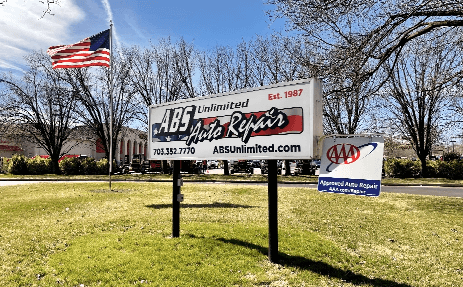
ABS Unlimited signage in Fairfax, VA.
If your shop is on a heavily traveled road, one of the best investments you can make is to the exterior aesthetics of your business. Don’t miss this one, folks. I’m telling you.
Examples Of Retention Marketing
Retention marketing is all about getting your current clients to visit your shop more often or to spend more at each visit. Often, all you need to do is put something in front of them that reminds them that you’re there and it will make them schedule an appointment that they already knew they needed to schedule.
When doing retention marketing, the people you’re marketing to have already been to your shop and will have a pretty good idea of whether or not they are going to come back to your shop for their next auto repair need. If you’ve done a great job of serving them in the past, it should be relatively easy to get them to come back again.
The great thing about retention marketing is that it costs so much less to do than acquisition marketing. Because the target audience is already in your system, you have the ability to email or text them, wish is nearly free. Or you can use direct mail very inexpensively.
CRMs – Client Relationship Management Systems
Before we get too far into retention marketing, it’s important to take a minute to talk about CRMs. CRMs are software, usually subscription-based, that connect to your shop management system and have additional functions that are specifically designed to allow you to better communicate with your customers.
A few examples of auto repair shop CRMs would be:
Some of these CRMs are more geared towards communication with the client while their car is in the shop, and others are geared more towards communication between visits.
These CRMs have functions such as:
- SMS Messaging (text messaging) – both during the visit and between visits
- Automated service reminder emails
- Manual marketing emails
- Direct mail service reminders
- Accept payments via text
Because they integrate with your shop management system, all of the customer information stays up to date and you don’t have to manually add email addresses, phone numbers, or vehicle information in order to market to new clients.
All of these CRMs have their strengths and weaknesses. You should look at all of them and demo the features before blindly deciding which one you want to use. You also want to make sure they will work well with your specific shop management software.
Ok, let’s get into a few examples of retention marketing.
SMS (Text Messaging)
There are two different ways you will use text messaging in your shop’s marketing.
The first is to use it to communicate with your client when their vehicle is in for repairs. You can:
- Keep them aware of the status of their vehicle
- Text them pictures and videos of needed repairs and/or service needs
- Text them an invoice to pay online so they can pick up their vehicle after-hours
The second would be to communicate with them between services. You can:
- Text them a special offer to bring their car in last minute when you need to quickly get some more work in the shop
- Text them reminders about previously quoted services
- Send happy birthday messages, videos, etc.
A note of caution; be careful about abusing text messaging to market to a customer between visits. Texting is almost “sacred” to many people and they could get upset if you abuse the privilege.
Email is going to be almost exactly the same as text messaging when it comes to what you can send a client. It’s just nowhere near as fast when it comes to response time.
The big difference with email is that people have come to expect to be marketed to via email, so you’re much less likely to make someone mad by sending them a marketing email.
My suggestion is to use text messaging during the visit and email marketing between visits.
Direct Mail
As I mentioned earlier, direct mail is great for both acquisition and retention marketing. But the messaging will be different.
When using direct mail for retention marketing you’re going to rely heavily on your CRM to determine a vehicle’s upcoming service needs or previously quoted work and send postcards or letters based on this information.
The CRM is able to determine approximately how many miles a vehicle has on it based on the mileage at the previous visits, and it can send reminders based on factory-recommended service intervals.
You can certainly use direct mail to send more generic messages to your client database, such as an upcoming promotion for Fall Car Care Month or some other significant happening, but it’s usually much more cost-effective to do this via email.
Customer Service
You probably don’t think of this as marketing, but it is – in fact – the holy grail of retention marketing.
Customer service is more important than anything else. It’s even more important than actually fixing the car. Think about it. If you provide great customer service but don’t fix the car correctly, you’ll likely get a second chance. If your customer service sucks, it doesn’t matter how great you are at fixing the cars, the customer isn’t coming back.
You need to create absolute raving fans by being the friendliest, most helpful people who create the most memorable auto repair experience you possibly can. It’s important to understand this because a lot of people think it’s ok for everyone to have a bad day every once in a while. But that one bad day can cost your shop thousands of dollars in revenue.
Go watch this video that our friend Chris Cotton from AutoFix Repair Shop Coaching shared with us and think about how you can recreate this type of experience in an auto repair shop, then go read the “Go The Extra Mile” section of this blog I wrote where I gave some examples of raving-fan customer service that a shop can do.
Social Media Marketing
Your social media presence is the perfect place to continue building on the know, like, trust factor between visits. This is where you let your current clients know about staff birthdays and anniversaries, big life events such as marriages or new babies, professional achievements such as certifications and training, and fun things like sharing your hobbies, vacations, and more.
When your clients know, like, and trust you – they actually look forward to bringing their car in rather than it being an inconvenience.
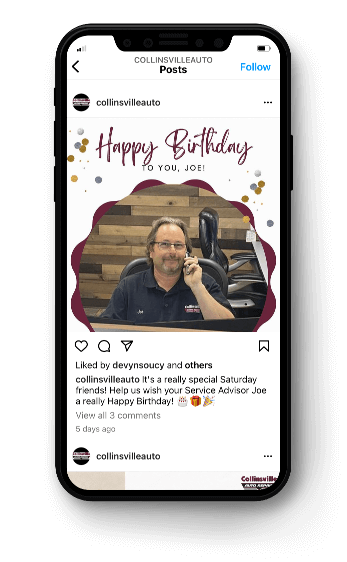
When To Use Acquisition Or Retention
Marketing
The short answer to this is if you can afford it, always be doing both. But the fact is, that may not always be feasible, especially for a young or struggling shop.
In most cases, you will see the biggest and fastest return on investment from retention marketing. These people (hopefully) already know, like, and trust you. You are “their mechanic” so you don’t have to convince them to come to you. You only need to make auto repair and maintenance top-of-mind at the right time for that person.
But….
If you’re a new shop and don’t have a big enough client base, you’ll need to focus on acquisition marketing.
If your shop has historically built a poor reputation, you’ll need to focus on acquisition marketing or a hybrid attempt to gain new customers for a fresh start while also letting past customers know you’ve changed. For the typical mature shop, though, you need to be executing a comprehensive marketing plan that includes both types of marketing.
Why You Should Care About Acquisition Vs Retention And Not Just Lump It All In As “Marketing”
It’s easy to think to yourself “I really don’t care to differentiate. It’s all just marketing, and I’m doing marketing.”
I get it, and I understand. The best thing we can do in our business is to simplify. But sometimes it’s easy to overlook the obvious.
Let’s say you have a low average R.O. and you’re trying to figure out why. It could be that you’re investing all of your marketing dollars into acquisition marketing. People don’t typically spend big on their first visit. If you’re not executing a thorough retention marketing plan to get those clients back in for multiple visits, yet you are doubled down on bringing in new clients, you’re probably driving your staff crazy pulling cars in and out of their bays all day with small repairs.
Knowing and understanding the difference between these two types of marketing helps you to diagnose problems in your business and create a more predictable machine.
Conclusion
You owe it to yourself, your staff, and your clients to be a better marketer. I say this all the time; when you provide a service that positively impacts other people’s lives, you have a moral obligation to sell it to them.
Knowing who you’re marketing to, why you’re marketing to them, and the expected outcome of every marketing action you take is the responsibility of a good marketer.
